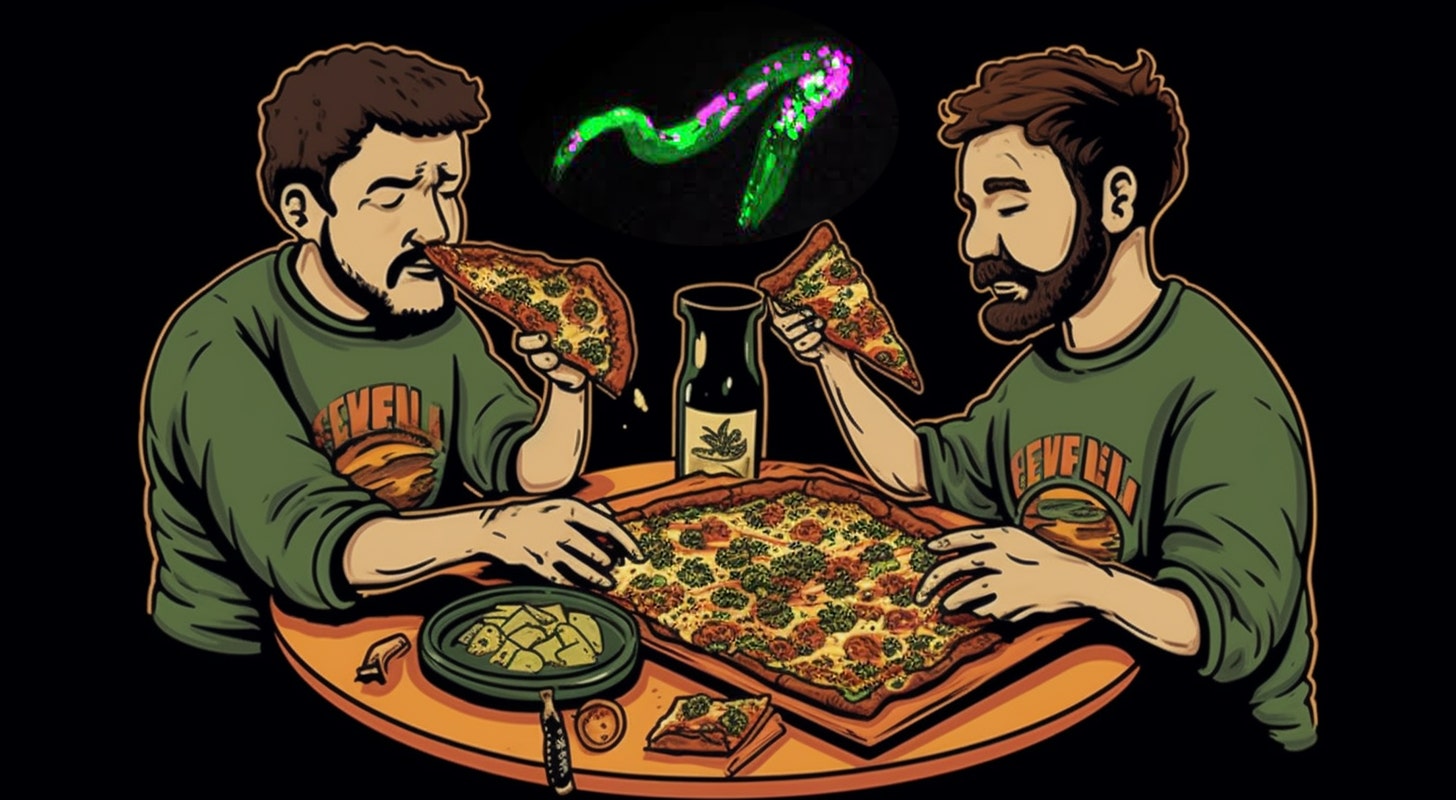
A new study has confirmed that weed-smoking bipeds aren’t the only creatures that get cravings. Worms appear to experience cravings for their favorite snacks after consuming cannabis.
University of Oregon researchers said the tiny nematode worms they used for the study were smaller than a human eyelash, so they infused them with cannabinoids, the active compounds found in weed. Although it was not known whether the worms got high, they showed a greater than normal craving for higher-calorie foods, just as people crave tasty food after consuming cannabis.
The results of the study suggest that cannabis can disrupt an important mechanism that helps regulate appetite.
Hungry nematodes
“Cannabinoids make nematodes more hungry for their preferred foods and less hungry for their non-preferred foods,” said Shawn Lockery, one of the study’s authors and a professor of biology and neuroscience at the University of Oregon. “Thus, the effects of cannabinoids in nematodes resemble the effects of marijuana on human appetite.”
Cannabinoids work by binding to proteins in the brain, nervous system, and other parts of the body called cannabinoid receptors.
“Cannabinoid signaling is present in most tissues in our body. It could therefore be involved in the cause and treatment of a variety of diseases,” said Lockery.
Normally, these receptors respond to cannabinoids naturally present in the body, known as endocannabinoids. The endocannabinoid system plays an important role in eating, anxiety, learning and memory, reproduction and metabolism.
“We propose that this increase in existing preferences corresponds to eating more of the foods you would be craving anyway. It’s like choosing between pizza and oatmeal.”
Profound effects on human health
researchers used C. elegansa species of nematode which has served as a model organism to study human diseases ranging from Parkinson’s disease to mitochondrial diseases,…
[ad_2]
Source story

